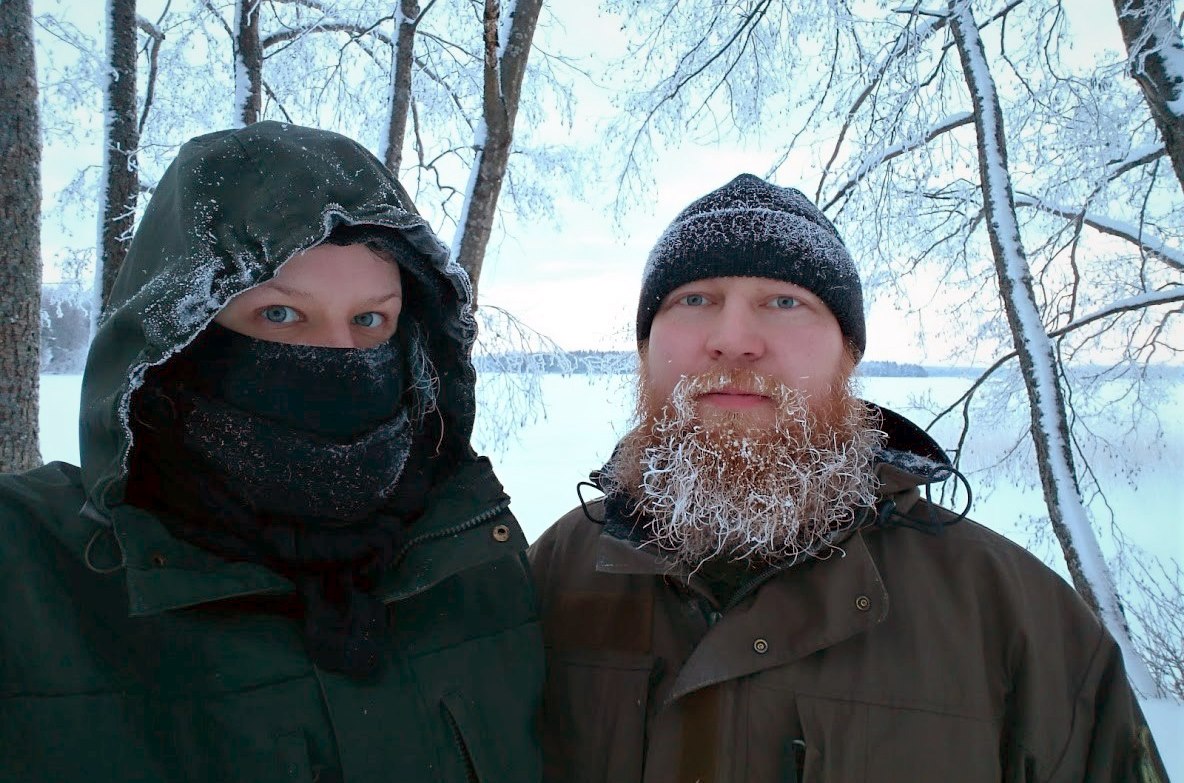
Hundred hikes in 2019, part 1/3
Hundred hikes in 2019, part 1/3
Hi gang, we are Essi and Tero! We live and work in the Helsinki region in southern Finland and we enjoy different kinds of outdoor adventures. We noticed that it is very easy to get stuck on the couch watching Netflix after work. To break this bad habit, we challenged each other to go on 100 hikes in 2019 and to keep a journal on Instagram. The goal was to spend more time in nature and hone our bushcrafting skills instead of wasting all that time in front of the TV.

We hiked in both summer and winter.
Some people have defined hiking above all as a state of mind. It is, of course, that but for us going on a journey primarily means traveling to a carefully selected nature site, exploring it, and observing nature there, with or without food. Sometimes we stay there for a week, sometimes overnight, and occasionally just for an hour. Sometimes we pick berries and mushrooms, every now and then we go bird watching. Sometimes we take a nap in a hammock or sit on a warm rock and every once in awhile cool off in a lake.
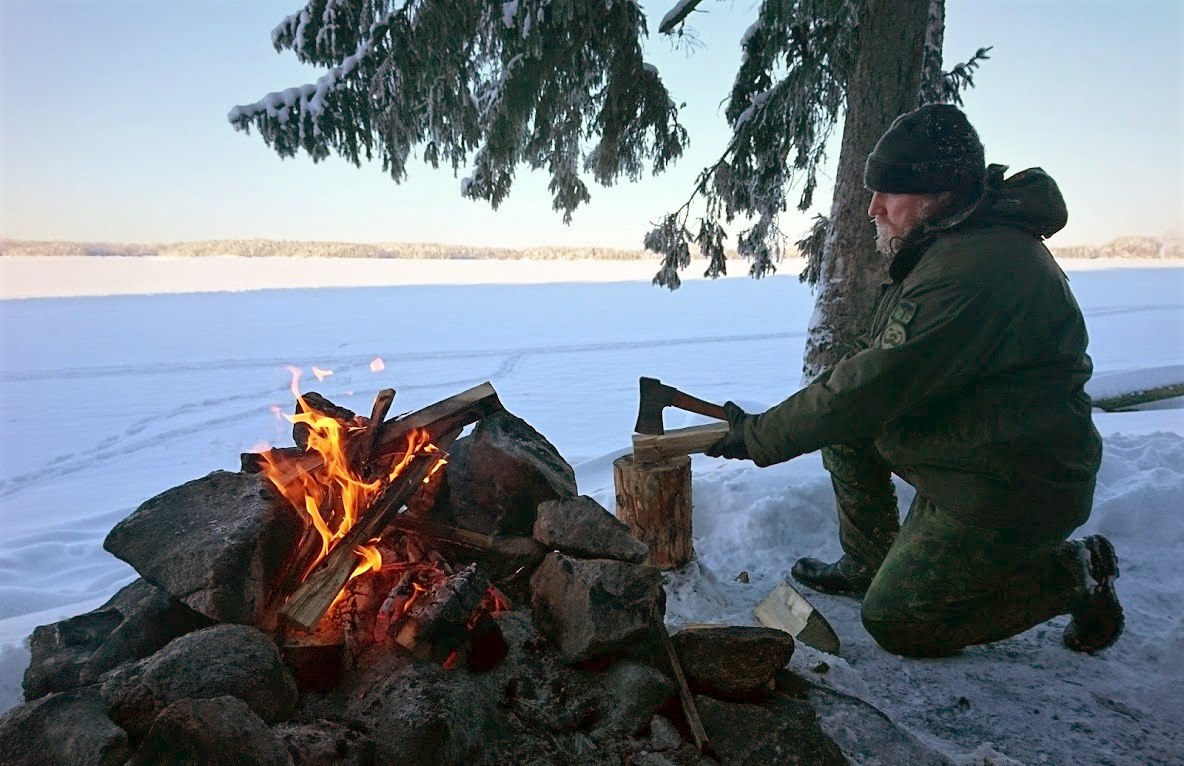
On the shores of Lohjajärvi in southern Finland.
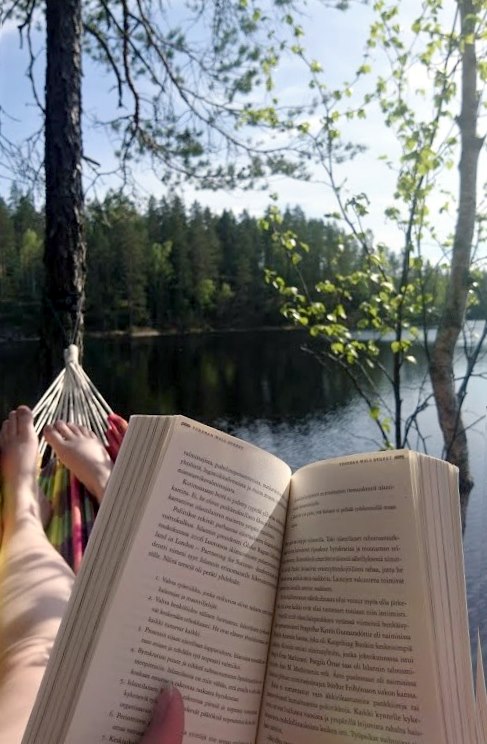
Nuuksio, an easy destination close to Helsinki

Cooking in Seitseminen National Park.
On motivation
When setting goals for yourself at work or in your personal life, they should be interesting and motivational. Not too easy but still realistic. A hundred nature outings in a year sounded exactly like such a goal.
We decided to accomplish this by making at least two trips a week, which left us a little bit of leeway for sudden changes. We also decided to devote our vacations to longer hiking trips, agreeing that each hiking day would count as one outing. We also agreed to embark upon these adventures together, this is after all also about taking care of our relationship. Both were also allowed to go hiking alone or together with other friends but such trips wouldn’t count in this challenge. And there were quite a bunch of these, too during the year.
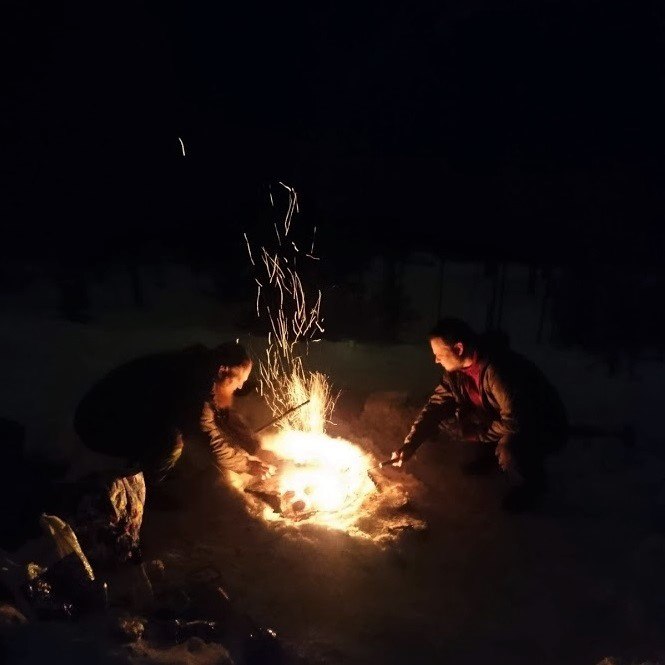
Nightly campfire with friends.
We also wanted to allocate some of these trips on workdays in addition to weekends. The weeks go by a lot more nicely when you spend some time in nature before or after work. And nothing beats a breakfast or dinner in the woods! This does require some pre-planning but not too much. Even if the day had some bad moments or you felt really tired, the mind got a lot brighter when you got some exercise and fresh air. You can also pick some wild herbs, berries, and mushrooms while out there.
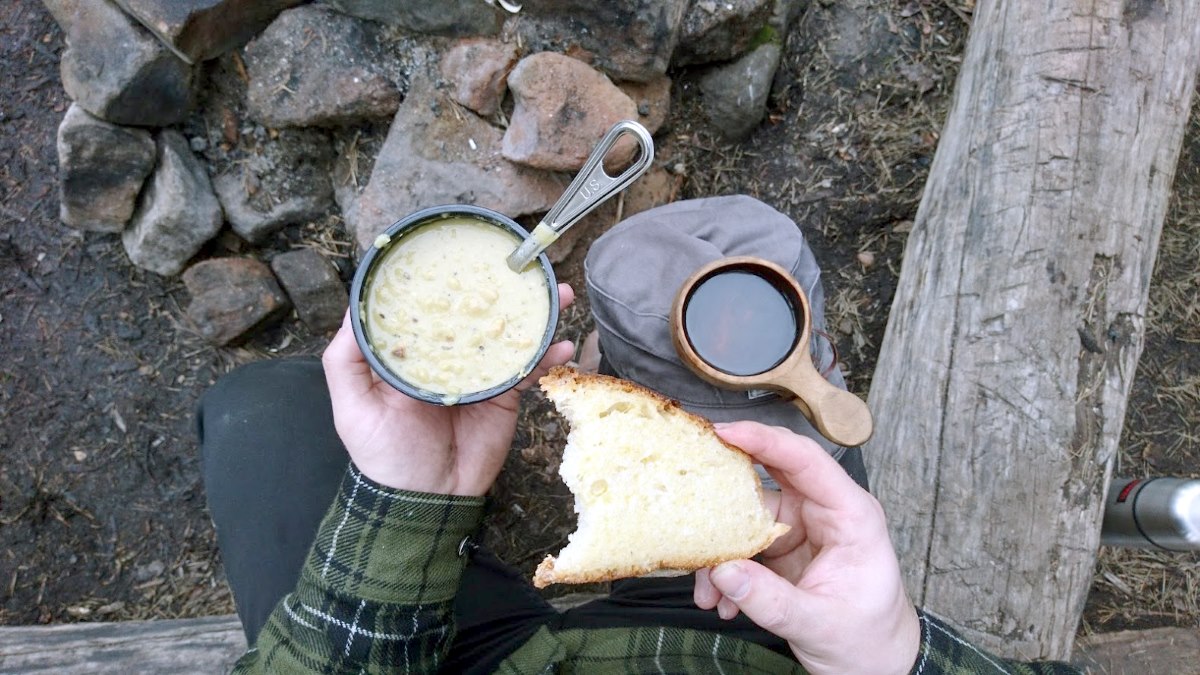
Open fire-toasted bread and traditional Finnish pea soup.
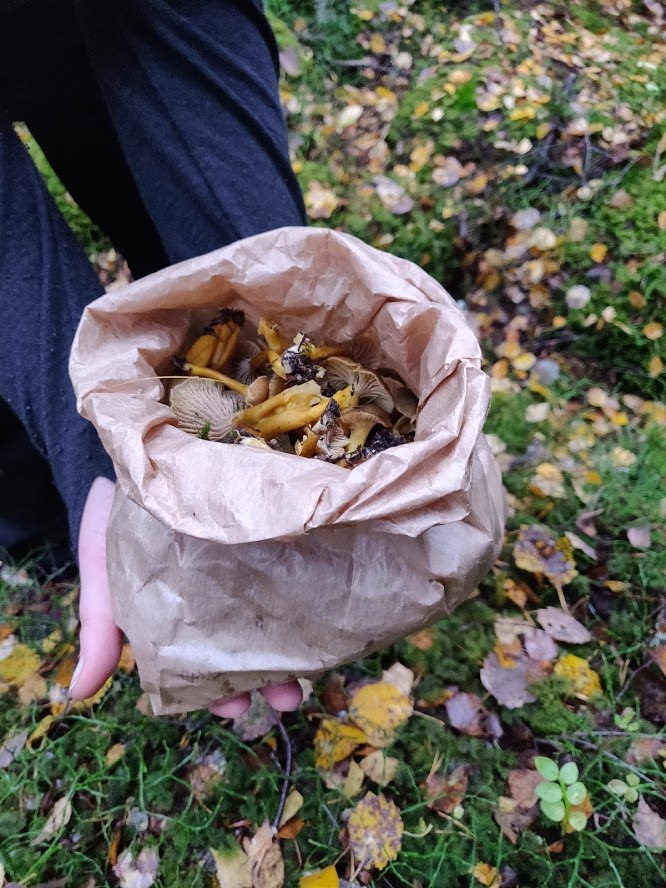
Funnel chantarelles.

Cranberries.
Preparing for an adventure
We both have been hiking in nature more or less all our lives, and even together already for sixteen years. We have also gone on one longer trip every year for the last five years. Because of this, we have most of the gear we need, and we didn’t need to make any additional purchases for this year.
Our philosophy has always been to select the right gear for the trip at hand. What is the purpose of the trek, how many days, how long distances, how difficult terrain? Pre-planning is especially important with longer hikes.
You can go for an evening outdoors straight from work in just jeans and with a rucksack. This year, we got plenty of packing and gear selection practice since we hiked in all sorts of weather during all seasons.
On gear selection
If you are not yet that experienced in hiking, usually your requirements will become a lot clearer after a few trips. Are your current boots and clothes suitable or could you use something different? There are also plenty of different gear lists online. At the end of this article on one of our previous journeys, there is a list of gear that we used on a hike a couple of years ago.
The more you gather experience in hiking, the better you can pack your stuff and the better you know yourself and what works for you. Do you feel hot or cold in your sleeping bag, how warm clothing do you need in camp, and will you sweat through your shirt and socks even in light activities so that they need changing quite often? All this you learn by hiking more.
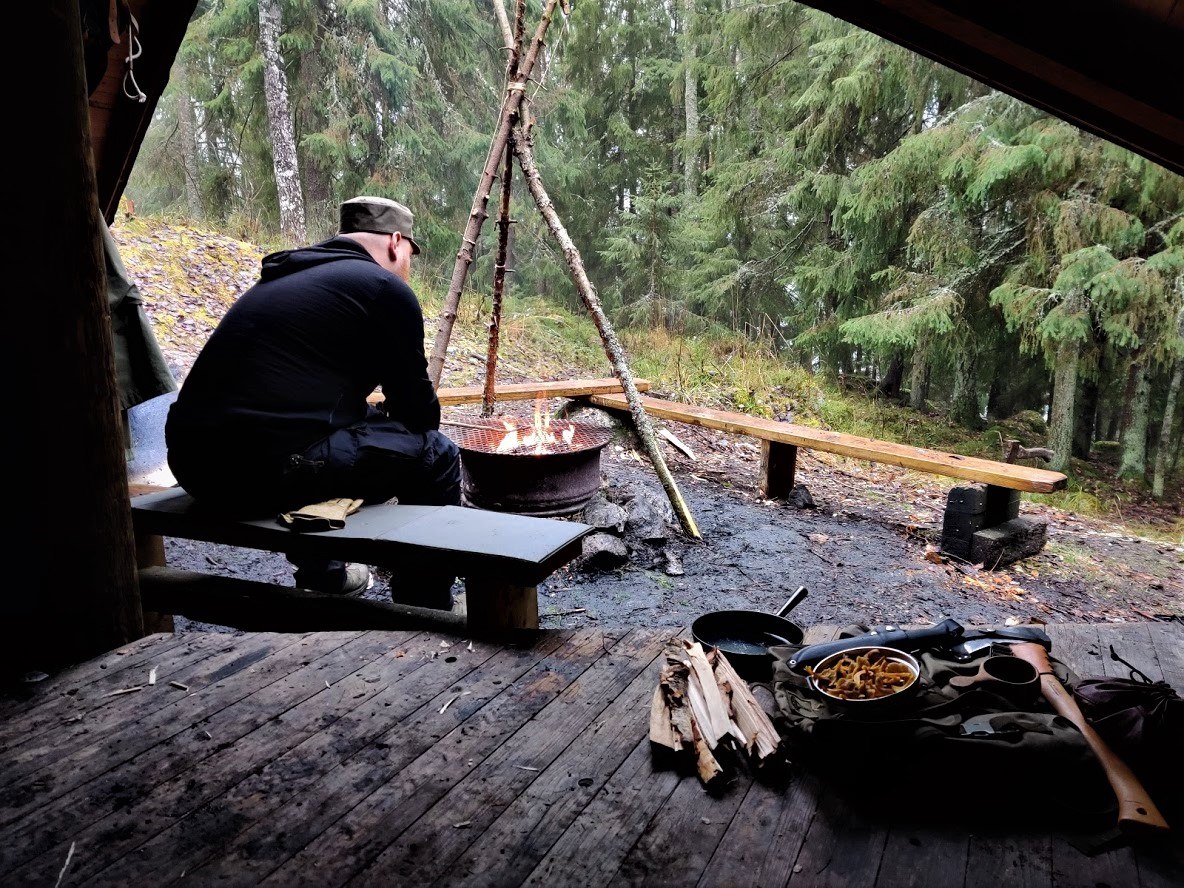
At a lean-to.
We brought our own firewood to the lean-to above. If we don’t know what the situation is going to be, we usually bring some with us.

Select your gear with the season and weather in mind.
On footwear
You should select the footwear based on your needs. On a short trek along an easy path, you can bring almost anything. However, the longer you travel in the wilderness and the more difficult the terrain is, the better boots you need. Shoes that function well in the urban jungle are not very good in the rocky wilderness of Lapland. Hiking boots are the most important part of your gear and you should pick them well. They protect your feet and keep them dry and functional throughout your journey.
Hiking boot maintenance is important after each trip to ensure that they will last long. Clean, dry, and either wax or otherwise treat them according to the instructions. We use merino wool blend socks even in everyday use nowadays. On longer hikes, you should use double socks: a thinner liner sock underneath and a thicker sock on top. You can even use two merino wool socks if your boots are spacious enough.
On clothing
On our adventures, we dress in layers based on the intensity of exercise and weather. Everything begins with the underwear. Your underwear needs to be well fitting, comfortable, and warm enough for the weather at hand. Merino wool is very forgiving, especially if you sweat a lot even when thinking about carrying a heavy backpack. For years, we have been using a merino wool hoodie as a mid-layer. When it gets colder, we also bring in a thicker woolen sweater.
As a top layer, we nearly always use breathable cotton or cotton blend jackets and pants. We appreciate jackets that have sleeves, hems, and collars that can be adjusted/tightened, as well as the ventilation zippers under the armpit. These make thermoregulation easier. Close the flaps when you get cold and open them when you get too warm. The most important feature of the pants is good mobility. They should not feel tight when you move or crouch down, and they should have plenty of big pockets. If you can use knee pad inserts with them, it is a nice bonus.
Some like to wear Gore-Tex and other similar membrane clothing all the time. We usually pack the rain clothes separately, and put them on only when it starts raining. Usually we bring along a waterproof membrane jacket with a hood and pants that we can quickly put on top of the other clothes when needed.
Always remember to bring along a hat. ALWAYS. It protects you from bugs, the wind, even some rain, and keeps your head warm.In addition to proper headgear, we nearly always carry along a neck tube or a balaclava. Experienced bushcrafters often say that if your toes are cold, put on a hat. It really works!

You can even pour coffee in your anorak.
An anorak is windproof and it comes with good ventilation capabilities. You can put other layers underneath it depending on the temperature and how much you move.
On packing
When people first start hiking, they often bring along far more stuff than they actually need. When you return home and maintain your gear, remember what you really used and what was completely unnecessary. This way you will quite soon have a good list.
Here’s a brief reminder of how the list grows when the trips get longer:
- A short 2-hour trip
- Weather specific clothing
- One-day hike
- Food and cooking gear
- Suitable gear for weather changes: cold/hot/rain
- Overnight hike
- Shelter equipment: sleeping bag/sleeping pad/tent/tarp/hammock
- Extra clothes and layers, for example. Extra socks and undershirts
- Personal hygiene products
- Weekend hike
- More food
- Bigger first aid kit
- Repair kit: cord, tape, extra straps, and a sewing kit
- Orienteering equipment: map, compass, GPS, etc.
- Week-long hike or longer
- More lightweight food
- More clothes
We have usually also brought along some comforts, so we aren’t really ultralight hikers. An old saying sums this up quite well: the more comfortable it is to hike, the less comfortable you will be in camp and vice versa. We often bring along an old cast iron pan. It is heavy but it is also damn nice and easy to cook with it. Also battery-powered lights set a nice atmosphere in the tent and they really don’t weigh that much.
You should consider whether it is more important to travel long distances quickly or spend more relaxing time in the camp. Also agree on this with your fellow travelers so everybody knows what to expect.
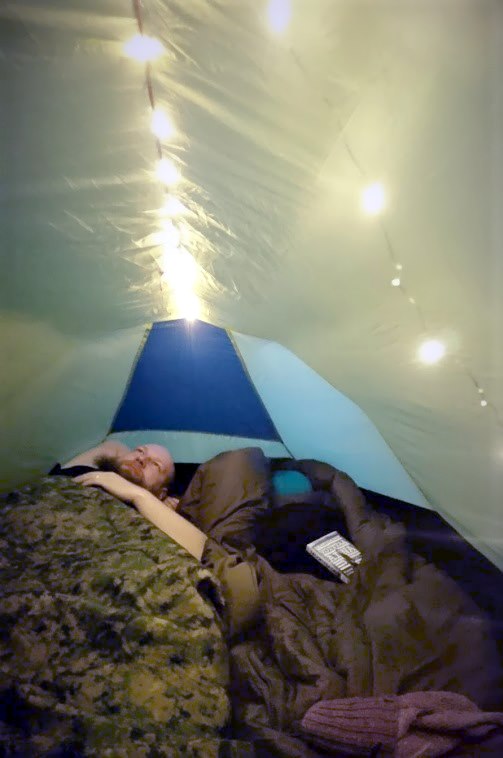
Battery-powered lights in action.
You should also bring along some good company at least for some of your trips. Remember to coordinate your packing so that you all don’t bring the same group-specific gear, such as cooking equipment, fuel, Skramas, etc. It is easy to bring unnecessary doubles accidentally.
At the same time you should also consider that especially on longer trips “two is one, one is none”. If your trip depends on a certain item, you should bring a spare one. For example, several people should should carry a map and a compass. And if you travel alone, you should bring two sets of fire-making tools, one in the backpack and the other in your pocket.
In the next part, we will encounter stunning landscapes in different parts of Finland and deal with some challenging moments.